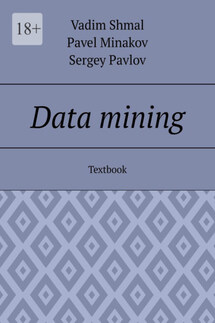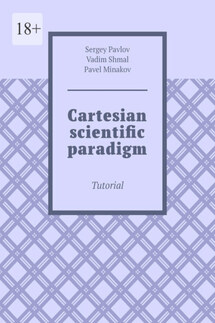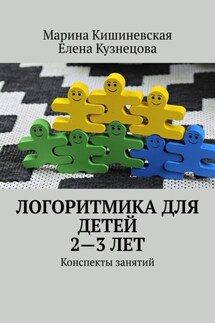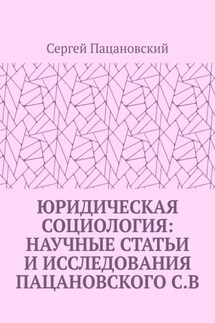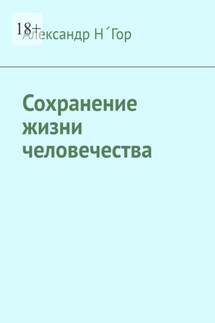Читать онлайн Vadim Shmal, Pavel Minakov - Urban and suburban transport intelligent management. Textbook
© Vadim Shmal, 2022
© Roman Efimov, 2022
© Pavel Minakov, 2022
ISBN 978-5-0059-3137-5
Created with Ridero smart publishing system
Introduction
The authors of the textbook focused on the consideration of existing and promising information technologies in transport from the standpoint of automated control of the transportation process, focusing on the description of the functional part of information systems, which fully complies with the State Educational Standard and the discipline «Information technologies in mainline transport».
The main content of the textbook corresponds to the standard program for the discipline «Information technologies in trunk transport», taking into account new developments and the introduction of information systems in transport. The content of the textbook corresponds to the plan approved by the methodological commission of the specialty «Railways operation».
1 INTERNET OF THINGS
1.1 Internet of Things in modern society
Modern conditions of the transport services market, the growth of requirements for the quality of their provision, the optimization of the consistency of technological processes to ensure intermodal transport lead to an increase in the complexity of making the most rational management decisions in an operational environment. There is a need for the use of modern technical means, automation systems and digital technologies. One of the options may be distributed intelligent network management based on the use of cyber-physical systems.
Cyber-physical systems (CPS) are the integration of computing with physical processes.
The main technologies for supporting cyber-physical systems include: Internet of Things (IoT) technology, embedded systems (embedded system), Ubiquitous computing technology, special network exchange technologies.
The current trend towards the use of digital technologies for the successful implementation of the «digital economy», «digital transport» and «digital railway», as well as the transition to the organization of the work of production processes of technological enterprises to the «Industry 4.0» mode within the framework of the fourth industrial revolution involves the construction of basic processes using an ecosystem that includes basic technologies:
– Internet of Things (IoT);
– Big Data;
– Artificial Intelligence (AI);
– Robotics;
– Blockchain;
– Virtual and Augmented Reality (VR, AR);
– Digital doubles;
– 5 G;
– Additive technologies, etc.
The Internet of Things technology is actively developing both in everyday life and in the transport industry. With the help of this technology, the amount of operational information about the functioning of the main processes is significantly increased, which is an incentive for the development of data processing, transmission, storage and processing systems in order to develop optimal solutions.
The life cycle of this technology includes: collecting information through the development of sensor technologies to obtain operational data (allows the user to understand various parameters of the object or process under study and evaluate their mutual influence), using scalable and secure storage based on cloud services and building optimal technology for processing and analyzing large amounts of data using modern digital technologies.
1.1.1 Internet of Things main characteristics
The Internet of Things (hereinafter – IoT) is a technology for collecting and transmitting information about the state of uniquely identifiable objects (things) that can interact with each other without human intervention for its subsequent automatic processing and the formation of control actions. In this technology, any physical object can be connected to any other physical object. The autonomy of the devices and their ability to transmit data independently is important. Structurally, IoT can be represented as a special network or a distributed system that includes the interconnection of physical devices, vehicles, buildings and other objects embedded in electronics (software, sensors, actuators). IoT technology allows objects connected to this special network to collect and exchange data.
The fundamental characteristics of IoT include:
– Connectedness. Any device (thing) should be able to be connected to the Global Information Infrastructure.
– Provision of things with services. The Internet of Things should be able to provide a thing with the provision of services related to it, without restrictions.
– Heterogeneity. The compatibility of technical means in networks must be ensured so that all IoT devices have the opportunity to interact with other devices or service platforms through various networks.
– Dynamic changes of attributes of things.
By «things» in IoT, the following objects are understood: sensors, controllers and other physical objects that were not originally intended to be connected to the network.
Each device in the IoT must be uniquely identified by:
– software and hardware provided for these devices;
– RFID tags, radio beacons, optical recognizable identifiers.
Currently, there are two main areas of implementation: Internet of Things (IoT) and Industrial Internet of Things (IIoT – Industrial Internet of Things). Despite the similarity of the basic concept, their functions and purpose differ.
In general, during the operation of the IoT, data is collected and accumulated necessary for further construction of objective forecasts, while with the help of the IIoT, the automation of technological processes of the enterprise is carried out using remote control of the main devices, depending on the standards and current readings of the main sensors and sensors.
The cloud platform of the industrial Internet of Things usually includes:
– standard sensors, sensors, actuators connected via unified connectors to the specified platform, which allow collecting, analyzing data and transmitting it over the network;
– network infrastructure combining heterogeneous communication channels;
– connectors (software and hardware) and platform access gateways providing unified access procedures and data formats;
– information systems designed to manage devices and communications, applications and analytics;
– applications and software that allow analytical data processing, the creation of predictive models and intelligent device management;
– storage systems for large amounts of data.
The main directions can be attributed to the industrial sector of IoT application:
– smart city;
– smart factories (smart factory, IIoT).
– smart warehouses;
– smart power grids;
– smart workplaces, etc.
Currently, in various Internet of Things projects, a connection can be built on the basis of technologies such as:
– information systems designed to manage devices and communications, applications and analytics;
– applications and software that allow analytical data processing, the creation of predictive models and intelligent device management;
– storage systems for large amounts of data.
– Wireless connection of various devices: Wi-Fi, Zigbee, RFID (Radio-Frequency Identification, Radio Frequency Identification), NFC (Near Field Communication, Near contactless communication), GPS (Global Positioning System), LPWAN, GSM networks, LTE or Bluetooth with low power consumption LiFi, Z-wave, LoRa, etc.
– wire mesh, wide area connections (3G, LTE);
– wired connections.
The development of technologies for collecting, transmitting and processing information led to the digital and industrial revolution, which was accompanied by an exponential increase in the number of devices transmitting information over the Internet. The use of automation, robotics and the introduction of such devices into people’s daily lives, and with the potential for each individual to have several devices containing microchips at once and Internet connection, led to the fact that in 2008—2009 the number of such devices exceeded the population of the Earth and further significant growth dynamics is observed. This fact should be considered the main prerequisite for the transition to the Internet of Things technology.
The main difference between the Internet of Things as a system from conventional communication systems is the ability to independently perform computing operations.
According to research, IoT technology allows you to capture and control objects remotely through the existing network infrastructure. By doing this, it creates opportunities for integrating the physical world into computer systems.
The main functions of the Internet of Things are: service, communication and informing.
IoT is based on two pillars:
– a physical environment that includes various sensors and sensors for monitoring and data collection;
– an analytical environment that allows you to make rational and effective management decisions based on the analysis of the data obtained.
In the Internet of Things, physical and virtual «objects» have the characteristics of identity, physical attributes and personification. The main role in IoT is played by devices that can collect various information and distribute it over networks to the necessary software products, as well as transmit control actions from them to devices. It is worth noting that in IoT, any communication node of the network is equal in providing its services.
As a data transfer format, it is convenient to use the format of JSON structures (Java Script Objective Notation). Its advantage lies in the fact that there is no need to include service information in the transmitted data.
The construction of IoT is associated with the formation of large data flows, which are not always structured. There are two main types for structured data: categorical and numeric. In the first of them, the data is associated with a set of values that is fixed.
Various special protocols are allocated for the interaction of things and users in IoT (Figure 1.1):
– IoT devices (things) and a user device (computer, tablet, mobile phone, etc.) establish a Device-to-Device (D2D) communication with each other;
– the collected data is transferred to the server infrastructure (cloud) «Device-to-Server» (D2S);
– the server infrastructure should share data, being able to transfer it back to devices, analysis programs or users – «Server-to-Server».
The following protocols of device interaction in IoT are distinguished (Figure 1.2):
– DDS: fast bus for integration of intelligent devices (D2D);
– CoAP: protocol for transmitting node status information to the server (D2S);
– MQTT: protocol for collecting device data and transmitting it to servers (D2S);
– XMPP: protocol for connecting devices to users, a special case of the D2S scheme when users connect to servers;
– STOMP: a protocol for exchanging messages between the device and the server, implemented in different languages and platforms (D2S);
– AMQP: queuing system for connecting servers to each other (S2S).
There are three main segments of the IoT technology market in Russia:
– mass market (B2C) or consumer segment: solutions for households and users – pos materials, smart home, banks, etc.;
– market of commercial companies (B2B) or industrial Internet of Things: industry, transport and logistics, finance, agriculture, etc.;

